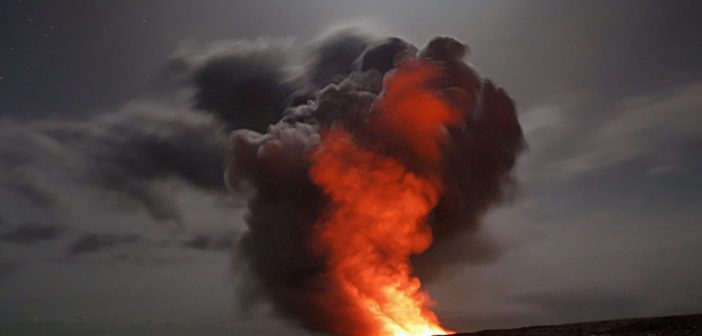By Tayhana Taylor, World News Editor
The Afghan’s future in their country is now at stake as the Taliban group regains complete control over the nation.
The Taliban During the Early 1990s
The Taliban group was formed in the early 1990s in Northern Pakistan by Afghan Mujahideen who resisted the Soviet Union. According to BBC News, “The promise made by the Taliban — in Pashtun areas straddling Pakistan and Afghanistan — was to restore peace and security and enforce their own austere version of Sharia, or Islamic law, once in power.”
In 1996, the group invaded Kabul, Afghanistan’s capital, which then led to the establishment of the Islamic Emirate of Afghanistan. Many of the Afghans were under the Taliban group’s remorseless and conservative leadership from 1996 through 2001.
The Temporary Defeat of the Taliban Group in 2001
The Taliban group’s advocacy for terrorism led to its defeat in 2001 by the United States military troops.
“The U.S. reacted to the terrorist surprise attack by al-Qaida against the World Trade Center, New York, and the Pentagon in Washington DC on September 11, 2001. 20 years ago,” said Dr. Marco Rimanelli, associate professor of European and security studies at Saint Leo University.
The Taliban group used Afghanistan as a haven to house Osama Bin Laden, a Saudi Arabia-born former mujahideen fighter. Bin Laden created and fostered a terrorist group with global designs: al-Qaida.
“When the United States realized it had been attacked by international Islamic terrorists hiding in Afghanistan, the U.S. government asked the government of Afghanistan to help with punishing the terrorist,” said Rimanelli. “Instead, the group refused and continued to protect Bin Laden.”
This refusal led President Bush to order the launching of a drastic airstrike campaign. Joined by former mujahideen groups inside the anti-Taliban Northern Alliance coalition, the U.S. and its allies overthrew the Taliban government.
According to CNN, “U.S. warplanes and cruise missiles from American and British warships struck at al-Qaida bases and Taliban military installations near several key Afghan cities, including Kabul and Kandahar.”
“The war lasted from 2001 to 2002— it was very quick with US commands and special forces and the CIA operatives supporting the local resistance in Afghanistan by the northern alliance,” said Rimanelli.
The United States victory in the war led to the collapse of the Taliban government. The Council of Foreign Affairs reported that despite the official fall of the Taliban group, al-Qaida leaders continue to hide out in the mountains of eastern Afghanistan.
The United States Government’s Attempt to Restructure Afghanistan: 2002 Onwards
In 2002, President Bush opted to restructure the government of Afghanistan by working towards establishing a democracy in the country.
The North Atlantic Treaty Organization (NATO) was a supporter of President Bush’s plans. NATO is an intergovernmental military alliance between 28 European countries and two countries in North America.
“The U.S. and NATO supported building up Afghanistan economically politically and by establishing institutions with democratic structures,” said Rimanelli. “The goal was to […] [build]roads and infrastructures like schools for children, support for women, support for businesses and establish a democratic representative government with elections.”
The United States government’s plans to form a democracy and restructure Afghanistan was rather unsuccessful. “Unfortunately, this experiment in nation-building collapsed due to the high rate of corruption in Afghanistan and the constant attacks by Toddy Bon against infrastructures in the country,” said Rimanelli.
The geographical structure and high poverty levels also contributed to the challenge of successfully achieving a democratic political system. Rimanelli further mentioned that “The difficult nature of a high mountain range with very few roads between cities, abject poverty that could not be solved with regular agriculture were all contributing factors.”
Two decades later, the Taliban group has managed to regain control over Afghanistan. During the midst of this invasion, President Biden supported past President, Donald Trump’s decision to proceed with the withdrawal of all military troops by August 31, 2021.
In February 2020, Trump signed a Peace Deal with the Taliban with hopes of ending an ongoing 18 years of conflict between the group and the United States. According to the agreement of the peace deal, the U.S. government agreed to reduce its forces in Afghanistan with the first 135 days of signing the deal.
“After the announcement of the timeline for the U.S. military troops withdrawal, the Afghan forces began to prepare to lose American air-support, American intelligence, which was their biggest advantage in their civil war against the Taliban,” said Professor Frank Orlando, a political science professor and the director of Saint Leo University’s Polling Institute. “I think that losing those advantages may have led the Afghans forces decision to not fight back, but rather cut deals with the Taliban or seek some sort of amnesty with the group.”
Biden did a press conference on Aug. 16, 2021, where he defended his decision to withdraw US military troops from Afghanistan during such a vulnerable and tragic time for the Afghans. “American troops cannot and should not be fighting in a war and dying in a war that Afghan forces are not willing to fight for themselves,” said Biden.
“The original plan was to stop the Taliban group from being a ‘hotbed’ of terrorism that could come back and attack the United States for a second time,” said Orlando. “Therefore, the original plan was not necessarily about nation-building in Afghanistan.”
On August 31, 2021, it was reported that the U.S. government successfully managed to withdraw its military troops— this officially marked the closing of the U.S. military relations in Afghanistan after 20 years.
While this may be a celebration for some Americans, uncertainty and chaos continue to prevail in Afghanistan. The current Taliban group is under new leadership; but the merciless behavior and conservative beliefs of the group remain constant, leaving vulnerable groups like the LGBTQ community, Afghans with non-Islamist beliefs, journalists, women, and young girls at risk.





